 |
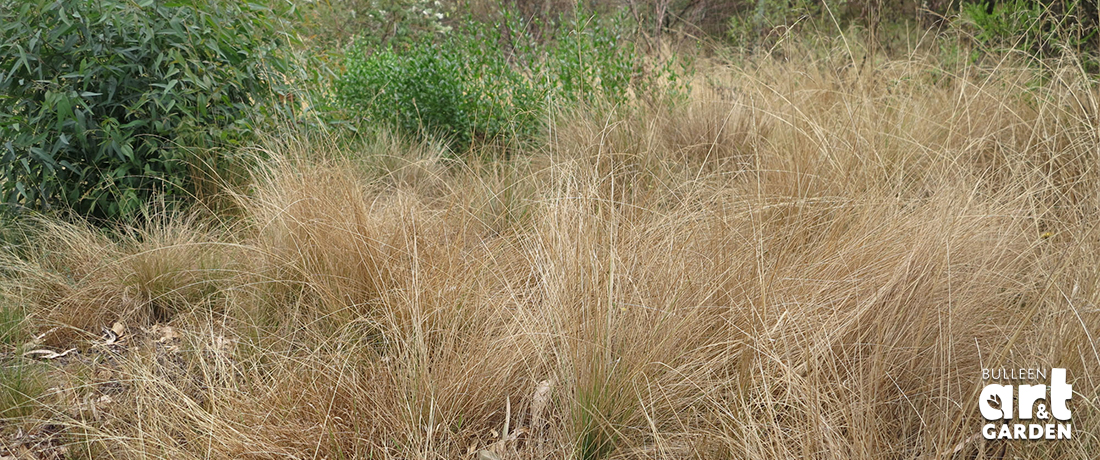
Indigenous Gardens – Indigenous plants are unique because they are perfectly suited to the environment that they belong to. This means that they can usually survive on local rainfall patterns and thrive in the local soil. Indigenous plants look great and are a very important food source for a wide range of local fauna.
 |
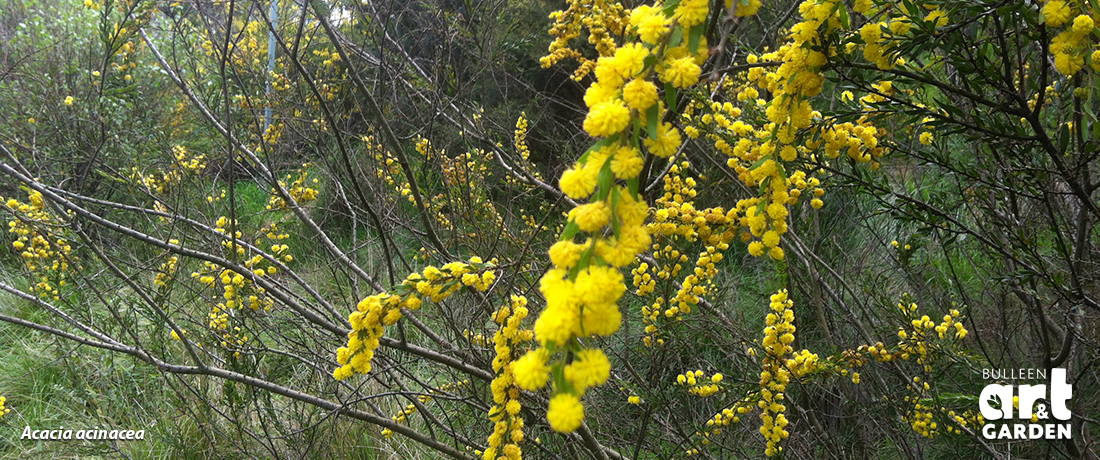
Acacia acinacea (Gold Dust Wattle) – Small stiff light green leaves borne on gently arching branches. Masses of fragrant golden yellow flowers from late winter to early summer. Suprisingly hardy!
 |

Dianella laevis (Flax Lily) – Apart from being a great landscaping plant, Dianella laevis has an ornamental and edible berry. It is a tough, hardy plant that will add lovely blue-green upright foliage to the garden, as well as numerous blue and yellow flowers on tall stalks.
 |
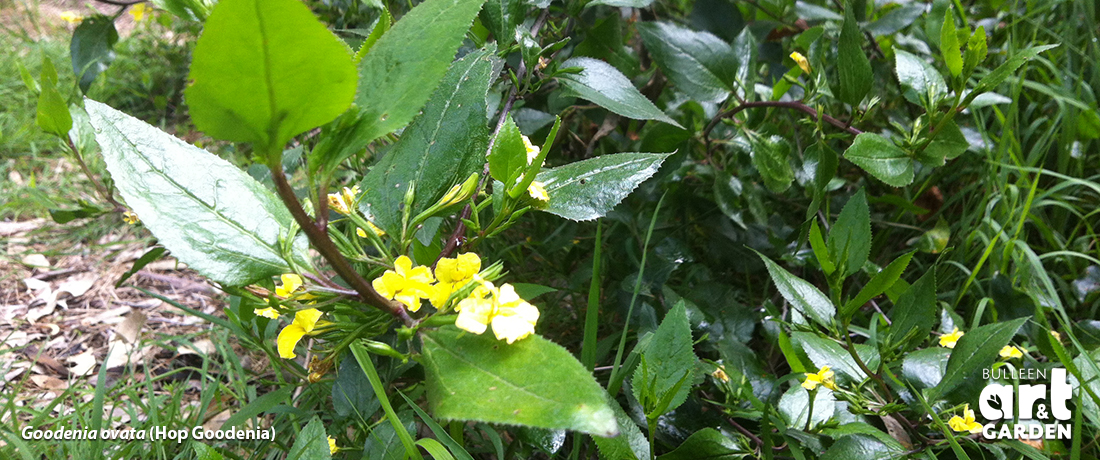 Goodenia ovata (Hop Goodenia) – Bushy shrub with bright yellow flowers, contrasting with fresh green foliage. Vibrant yellow blooms make good cut flowers. Sprays of yellow flowers most of the year, with peak flowering through spring and summer.
Goodenia ovata (Hop Goodenia) – Bushy shrub with bright yellow flowers, contrasting with fresh green foliage. Vibrant yellow blooms make good cut flowers. Sprays of yellow flowers most of the year, with peak flowering through spring and summer.
 |
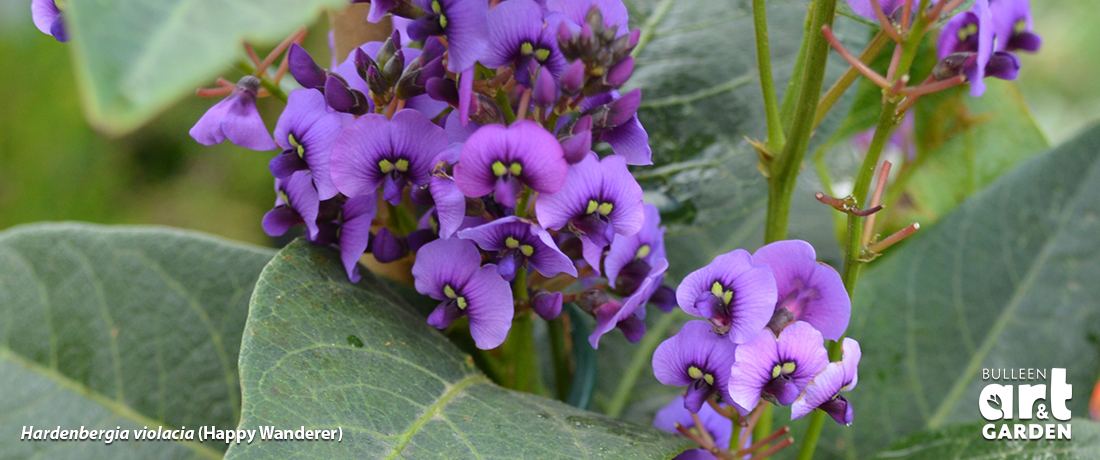
Hardenbergia violacea (Happy Wanderer) – The long flowering period make it a valuable pollen source for native bees. Frost tolerant and copes with dry exposed sites, but prefers some protection from the full sun. Looks best planted in groups. Gorgeous, delicate soft pink flowers from late winter through spring.
 |
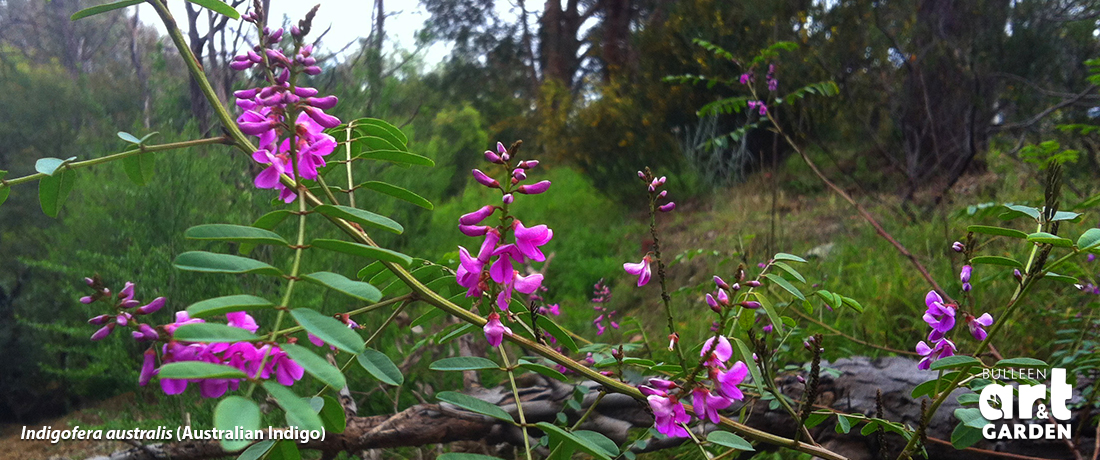
Indigofera australis (Australian Indigo) – Flowers are sprays of soft purple through to pink from mid-September to November. Lovely soft blue green lacy foliage. Form can be variable, pruning will give a neater dense form, leaving alone will lend to a more delicate open arching form.
 |
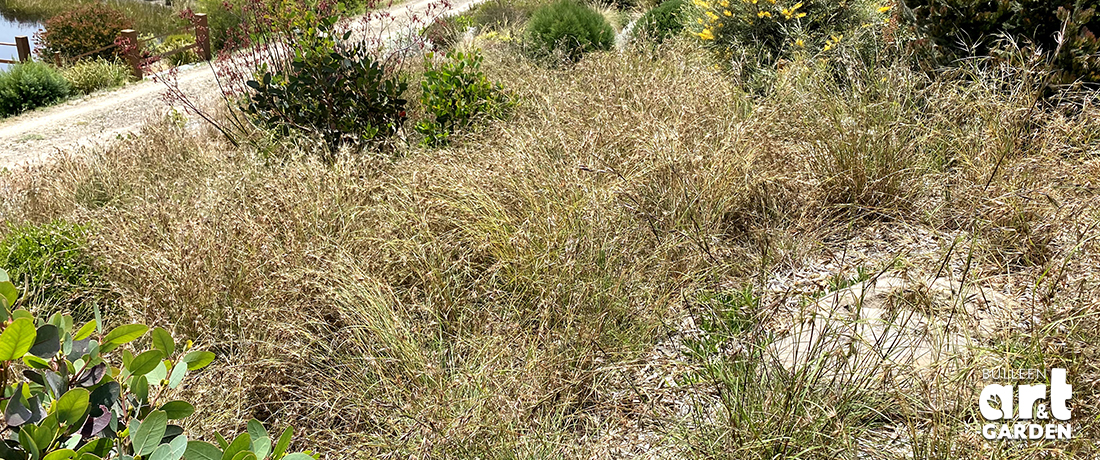
Kangaroo Grass – Soft, erect or sprawling perennial tussock with narrow green, purple or blue leaves. A distinctive grass which forms extensive swards in native grasslands. Glossy, rust coloured spikelets on slightly arching stems from September to February.
 |
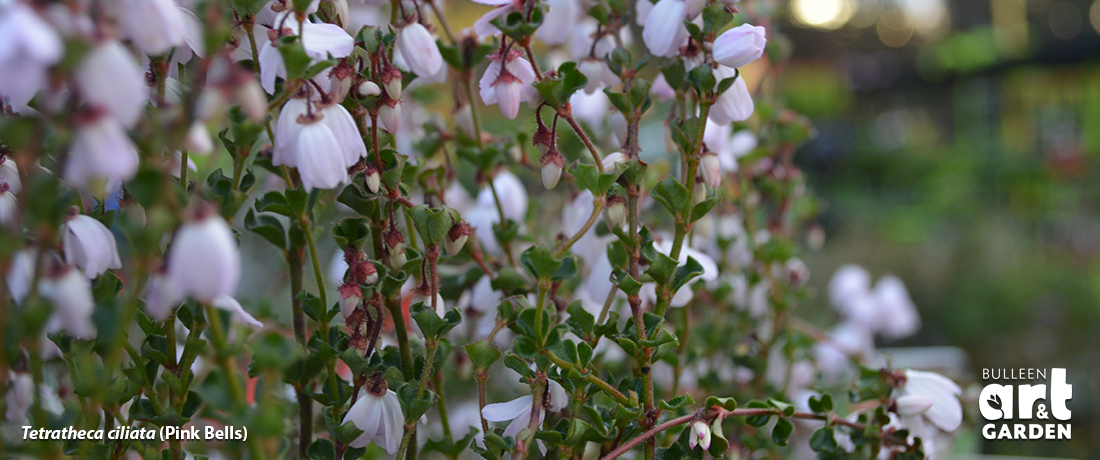
Tetratheca ciliata (Pink Bells) – The long flowering period make it a valuable pollen source for native bees. Frost tolerant and copes with dry exposed sites, but prefers some protection from the full sun. Looks best planted in groups. Gorgeous, delicate soft pink flowers from late winter through spring.
